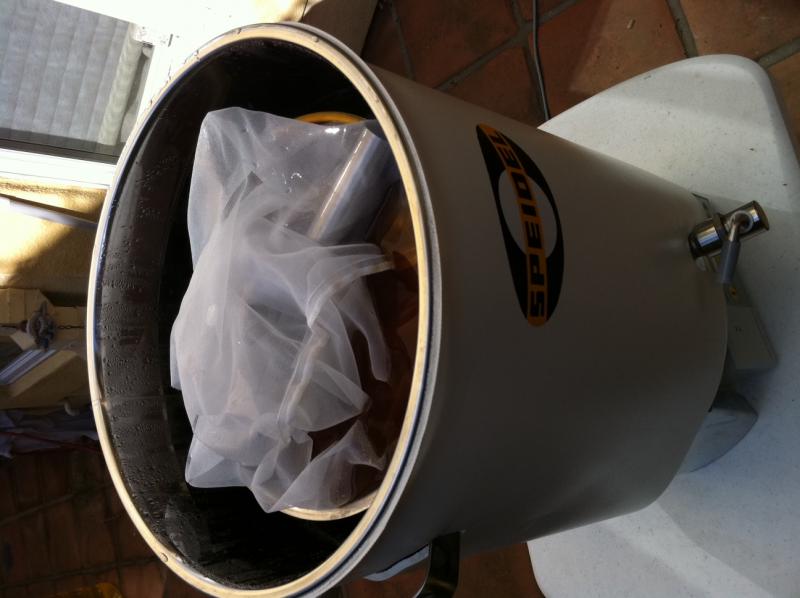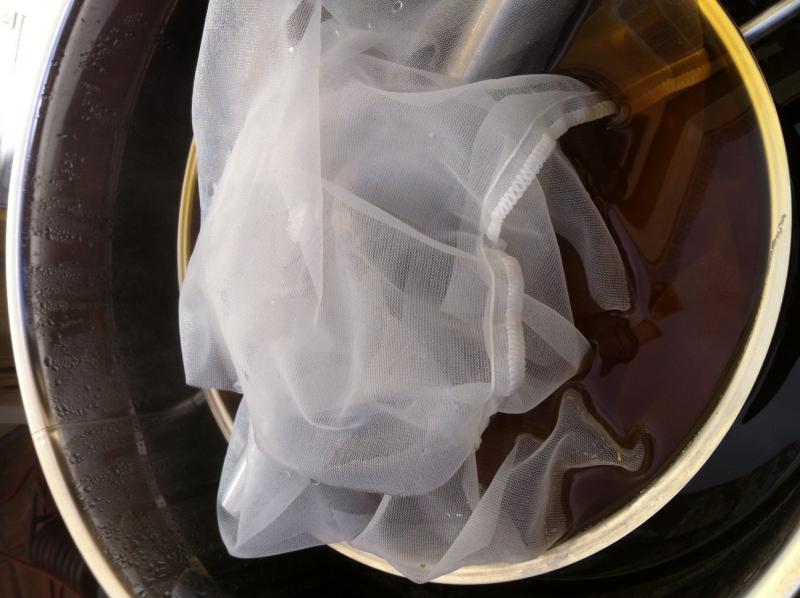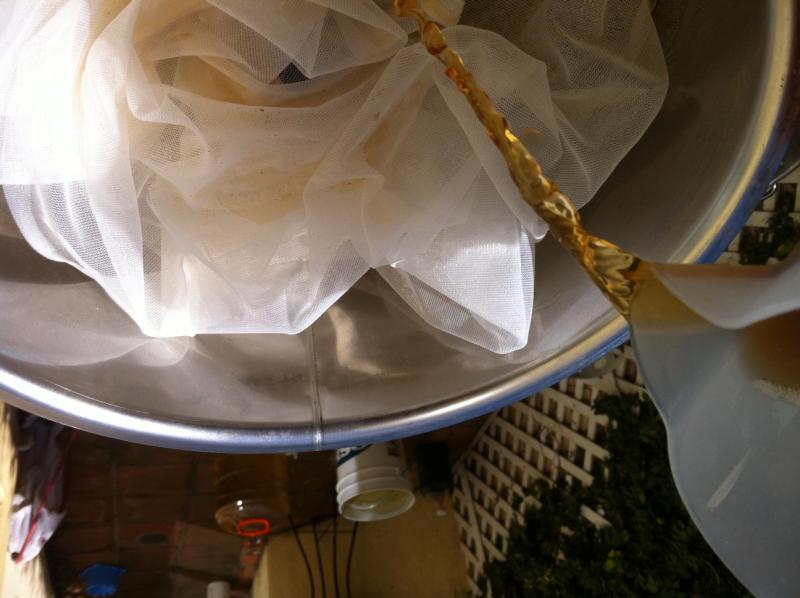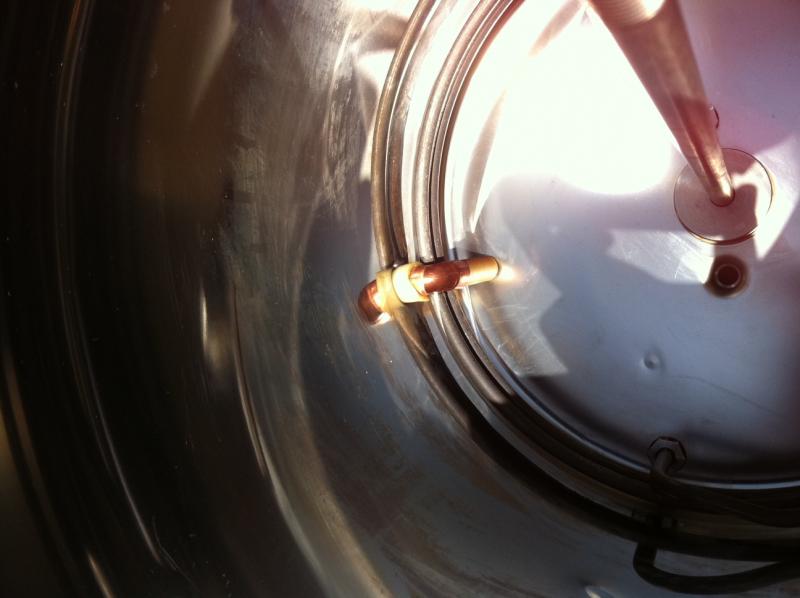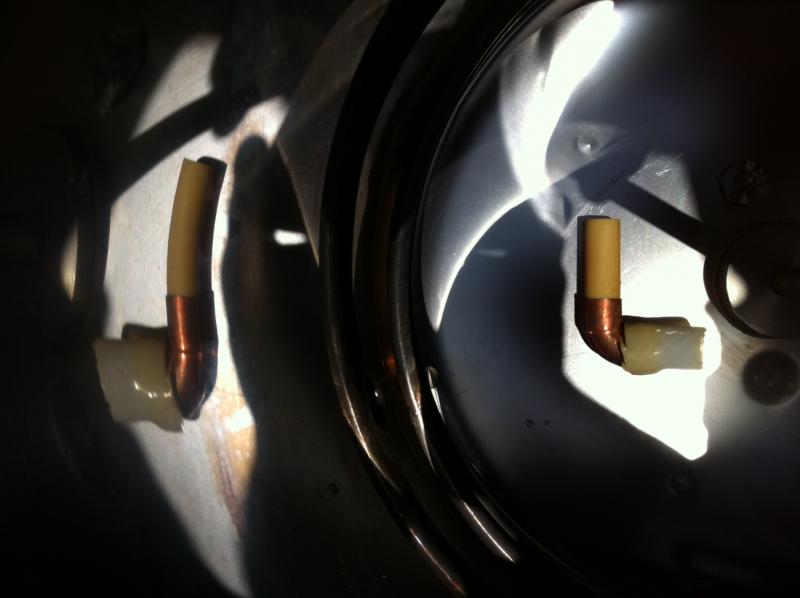Started it up in manual mode. Heated water to 73c with pumps running and lid on.
Added malt pipe, bottom sieve, cloth filter, screen filter.
Added grain. There was 8 gallons of water in the pot. I wasn't sure how much water I could add and still keep the grain bill inside the pipe so I stopped at 8. I added one gallon at a time until I reached this number. In the 50L unit this put the very bottom ring at about 5 gallons and the third ring from the bottom at about 7 1/2.
My grains didn't seem tohave enough water, so I drained some from the spigot and poured it back inside the malt pipe.
This was before the added water.

This was after.

Then I added the top cloth filter

Then the top sieve

Then the bar that holds the malt pipe down

Then the adapter vertical bar you need with the smaller malt pipe in the larger unit.

Then snugged it down with the wing nut

Then I turned the pump on and off several times to purge, set my temp to 67c for the mash and turned the pump on.

Added the lid and the collar and then waited for the temp to fall below 67c. Once this happened I turned the heating element on with the above mentioned set temp of 67c (152.6F).

This was after 30 minutes

And now I am 2 minutes away from my mash being over.
Added malt pipe, bottom sieve, cloth filter, screen filter.
Added grain. There was 8 gallons of water in the pot. I wasn't sure how much water I could add and still keep the grain bill inside the pipe so I stopped at 8. I added one gallon at a time until I reached this number. In the 50L unit this put the very bottom ring at about 5 gallons and the third ring from the bottom at about 7 1/2.
My grains didn't seem tohave enough water, so I drained some from the spigot and poured it back inside the malt pipe.
This was before the added water.

This was after.

Then I added the top cloth filter

Then the top sieve

Then the bar that holds the malt pipe down

Then the adapter vertical bar you need with the smaller malt pipe in the larger unit.

Then snugged it down with the wing nut

Then I turned the pump on and off several times to purge, set my temp to 67c for the mash and turned the pump on.

Added the lid and the collar and then waited for the temp to fall below 67c. Once this happened I turned the heating element on with the above mentioned set temp of 67c (152.6F).

This was after 30 minutes

And now I am 2 minutes away from my mash being over.








